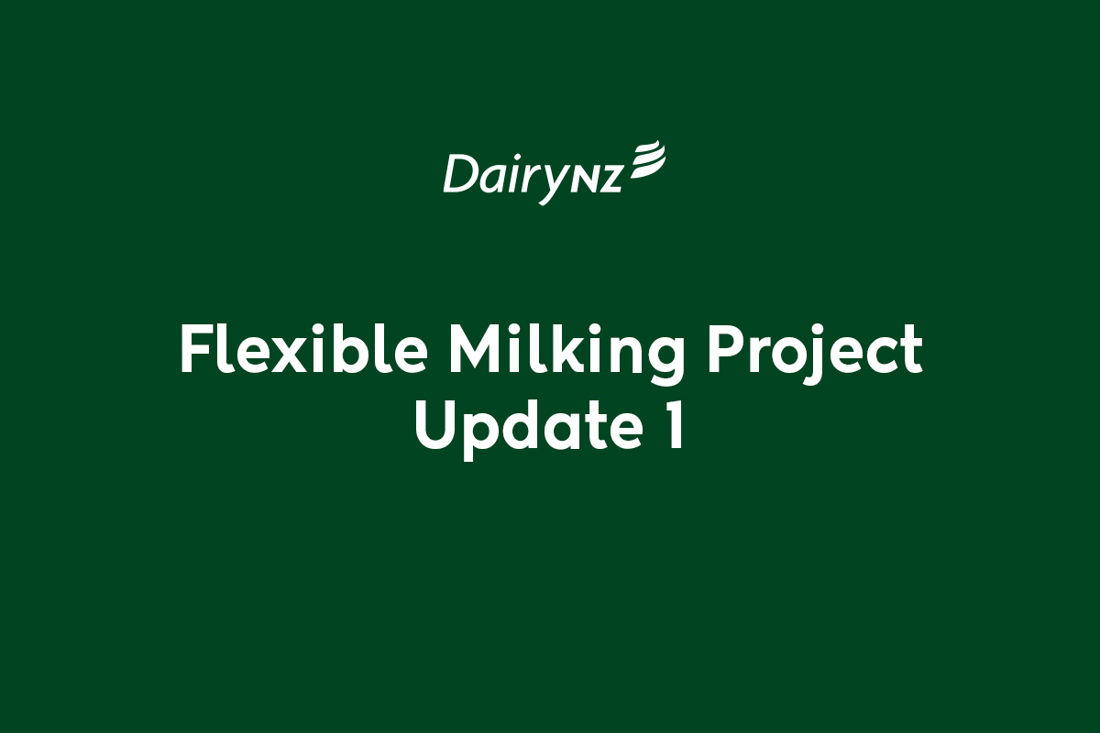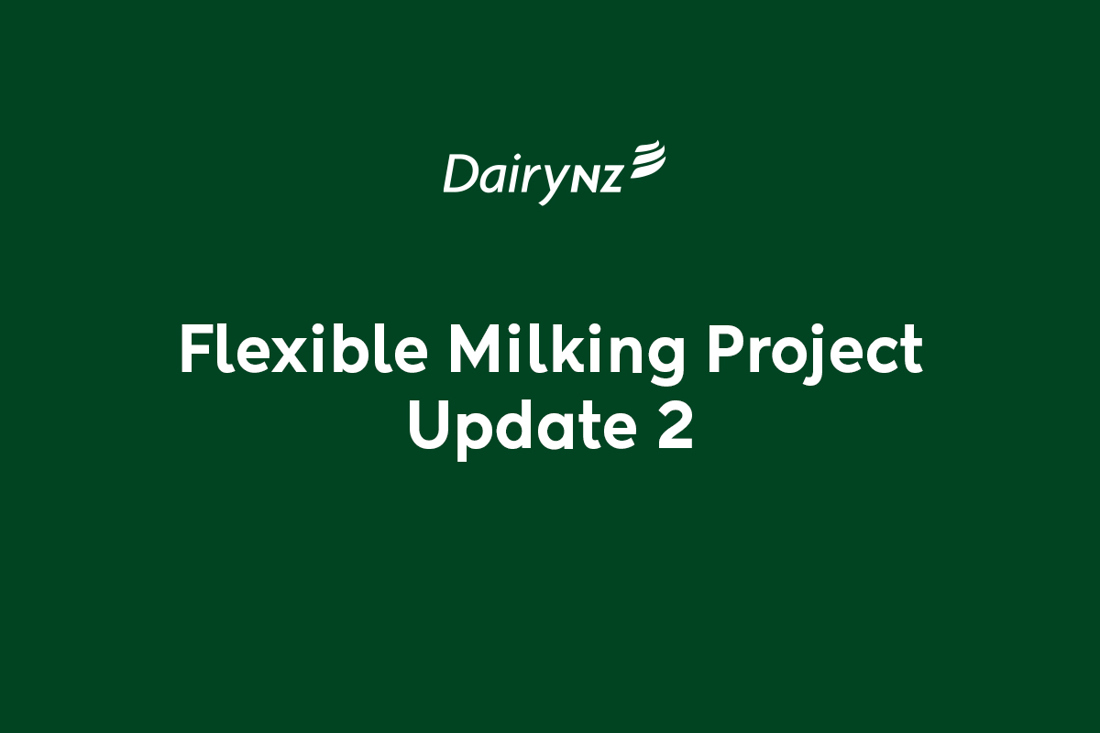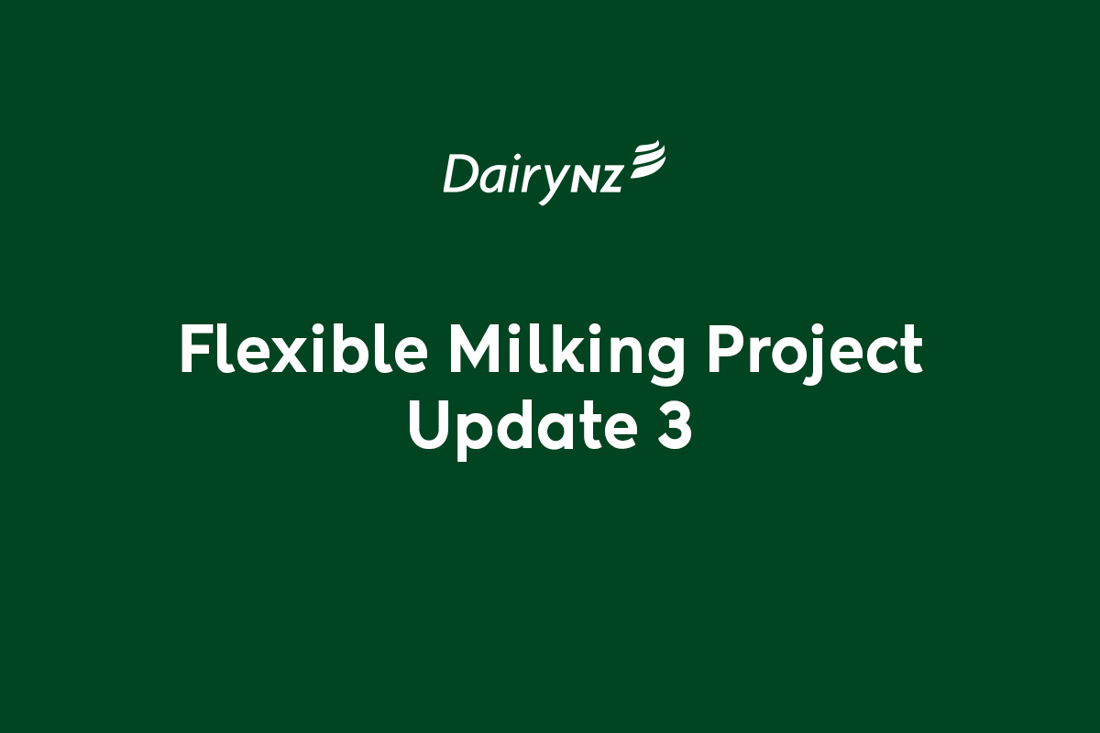Flexible Milking Project
3 min read
Milking three times in two days (3-in-2) is a research project called "Flexible Milking for Healthier People and Cows". It began in 2019 and lasts for three years. The main goals are to give farmers confidence in using 3-in-2 milking, promote better work-life balance, and improve the economic sustainability of farms. The study looks at how this method affects cows, pastures, and human wellbeing. Initial tests explored different milking frequencies and their impacts. The following years will focus on wider adoption on commercial farms and modelling various flexible milking scenarios. The project receives funding from the Sustainable Farming Fund and the DairyNZ levy.
This research programme will investigate the human, animal and pasture response to milking three times in two days (3-in-2). The project, Flexible Milking for Healthier People and Cows, started in July 2019 and will run for three years.
The first year of the study focused on learning from farmers already using 3-in-2 strategically to help guide development of resources and information.
A farmlet trial was also set up at Lincoln University Research Farm.
Four milking frequency scenarios were tested and the impact on milk production, body condition, animal behaviour, pasture production and grazing management were measured.
Initial results from this year's work were presented in a webinar, a recording of which is available above. You'll find out about the results from year 1 of the project, how 3-in-2 might suit your farm, and what's planned for the next two years. A written summary was also published in:
Read the summary of the 1-year farmlet study conducted in 2019-2020, testing the use of 3-in-2 milking at different times during the season.
The project will expand to piloting 3-in-2 on commercial farms, including measures to evaluate the effects on people of moving to a 3-in-2 system. Find out more about our pilot farmers.
A second trial will be conducted to investigate the effect of different intervals used with 3-in-2 on milk production (as well as TAD and OAD).
Originally, 3-in-2 started as milking every 16 hours (16-16-16), but this has a night milking associated with it. It was then adapted to 14-16-18 and now to 12-18-18 (which was tested in the farmlets) to suit staff.
This second trial will also look at what trade-offs may exist by extending these milking intervals further to reduce the length of the day with two milkings. Five milking intervals will be tested at two snapshots in peak and mid-lactation. The intervals will be TAD (10-14), 3-in-2 (12-18-18, 10-19-19 and 8-20-20) and OAD.
The focus in this stage will be on modelling to predict outcomes in different flexible milking scenarios. For example, if a farmer wanted to go once-a-day (OAD) milking during calving (to reduce work at a busy time); then go TAD through peak lactation; then 3-in-2 through mid-lactation; and OAD near dry-off.
Dairy farmers will be given results from the project regularly and resources will be developed to help farmers make informed decisions regarding the use of 3-in-2 milking.
This project is led by DairyNZ and funded by $499,536 from the Sustainable Farming Fund and $306,914 from the DairyNZ levy.
Could reducing the number of milkings in a week help the dairy sector attract new staff and improve work-life balance? One farmer who’s gone to a flexible milking schedule is John Totty in Canterbury, currently starting his second full season milking 10 times in 7 days. What were his reasons for changing his milking schedule, and what kind of outcomes is he seeing?

DairyNZ senior scientist Paul Edwards gives an update on a study being run at the Lincoln University Research Dairy Farm, comparing the farm system effects of using 3-in-2 milking at different stages of lactation. During this webinar Paul present the latest results and shares what is planned for the next two years of the project.
Video 1:04:18 min

This webinar was organised by the Waikato Region and builds on the webinar from 30 March 2020. Key results from the 2019/20 season farmlets using 3-in-2 at difference stages of lactation are presented as well as new results from a 6-week experiment this spring exploring how much flexibility there is with the timing of 3-in-2 milkings (e.g. 10-19-19 and 8-20-20).
Video 57:10 min

In this webinar we hear from four of the pilot farmers about their experiences using 3-in-2 so far, during the first half of the season. Topics covered include their main concerns before adopting full-season 3-in-2, their observations of the system so far, the surprises, biggest challenges, and tips they’ve picked up along the way.
Video 55:02 min
Now’s the perfect time to check in, plan, and set up for a strong season. We’ve pulled together smart tips and tools to help you stay ahead all winter long.
Whether you prefer to read, listen, or download handy guides, we’ve got you covered with trusted tools to support your journey every step of the way.
Put our proven strategies and seasonal tools to work. Boost production, support animal health and watch your profits hum.
Tools that are backed by science, shaped by farmers and made for this season.
That’s Summer Smarts.